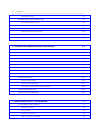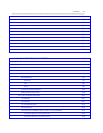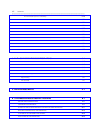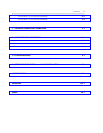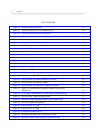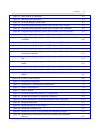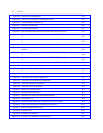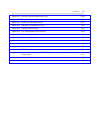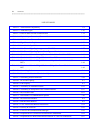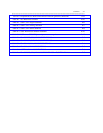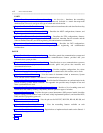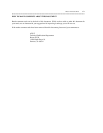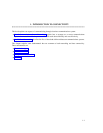xiv CONTENTS
_ ___________________________________________________________________________________________________________________________
_ ___________________________________________________________________________________________________________________________
_ ___________________________________________________________________________________________________________________________
LIST OF TABLES
Table 1-1. Terminal/Port Compatibility 1-9
Table 1-2. Trunk Port Types 1-10
Table 1-3. Protocol States for Data Communication 1-14
Table 1-4. Physical-Layer Protocol vs. Character Code 1-15
Table 1-5. DMI Mode vs. Character Code 1-15
Table 1-6. Signal-Inversion Requirements 1-21
Table 1-7. Data-Module Capabilities 1-22
Table 1-8. 24th-Channel Signaling Arrangement — DMI BOS 1-27
Table 1-9. 24th-Channel Signaling Types vs Trunk Types and Destinations 1-28
Table 1-10. Generic 1 and Generic 2 Analog Trunks — Voice/Voice-Grade Data BCC 1-43
Table 1-11. Generic 1 and Generic 2 Digital Trunks — Voice BCC 1-45
Table 1-12. Generic 1 and Generic 2 Digital Trunks — 64 kbps User Rate — Modes 0,2,3
BCCs 1-48
Table 1-13. Generic 1 and Generic 2 Digital Trunks — 56 kbps User Rate — Mode 1
BCC 1-49
Table 2-1. Networking Software 2-4
Table 2-2. Network Administration Terminals and Systems 2-18
Table 2-3. Networking Feature Parameters 2-19
Table 6-1. DCS Node Capacity 6-2
Table 6-2. Link Capacity 6-3
Table 6-3. Availability of Attendant Features 6-15
Table 6-4. Availability of Transparent Voice Terminal Features 6-17
Table 6-5. DCS Cluster Limits 6-21
Table 7-1. Data Feature vs Communications Systems 7-10
Table 8-1. DCP-Port Data Modules 8-8
Table 8-2. BRI-Port Data Modules 8-9
Table 8-3. LAN Transmission Media Characteristics 8-14
Table 8-4. Gateway PC Software 8-15
Table 8-5. LAN-to-LAN Communications Packages 8-19
Table 8-6. Requirements for Connections from the PBX to SDS/SDDN 8-24
Table 8-7. Requirements for PBX-to-PBX Private Network T1.5 and T45 Connections 8-27



